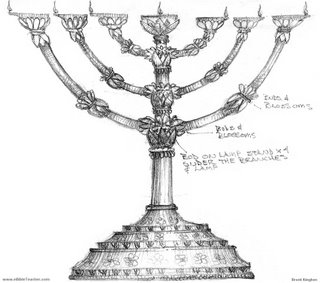Synopsis
A lot of the chapters we’ve been reading lately have been concerned with “the law”. God has been giving His people the rules, regulations, and bylaws, by which they should live their lives as a new nation. For the next few chapters, He is going to give instructions on how they should construct the Tabernacle.I like that the Israelites are to give as their hearts prompt them—there is no set amount for each person to give, they’re just to give whatever they want.The LORD said to Moses, “Tell the Israelites to bring me an offering. You are to receive the offering for me from each man whose heart prompts him to give. These are the offerings you are to receive from them: gold, silver and bronze; blue, purple and scarlet yarn and fine linen; goat hair; ram skins dyed red and hides of sea cows; acacia wood; olive oil for the light; spices for the anointing oil and for the fragrant incense; and onyx stones and other gems to be mounted on the ephod and breastpiece.
“Then have them make a sanctuary for me, and I will dwell among them. Make this tabernacle and all its furnishings exactly like the pattern I will show you.
- The Ark
- It’s to be made of acacia wood, overlayed in gold, with a gold molding
- It is to be 1.1 metres long, 0.7 metres wide, and 0.7 metres high
- It doesn’t specify it in this passage, but the Israelites are not ever to touch the ark, after it’s been built. Therefore, they are to build poles, with which to carry it. The poles are also to be built out of acacia wood, and overlayed with gold. There are to be rings built into the side of the ark, where the poles will be inserted.
- They are to put into the ark the Testimony—which is, I think, the book of the law. (I believe the stone tablets that God is going to give Moses are also to go into the ark, but I think that’s in addition to “the Testimony”. I could be way off.)
- The cover for the ark is to be pure gold, 1.1 metres long and 0.7 metres wide.
- Built onto the cover are to be two cherubim, facing each other, with their wings spread out upward, overshadowing the cover.
- The ark is where God is going to meet with Moses, and give him His commands for the Israelites. He will meet with Moses “above the cover, between the two cherubim” (verse 22). In fact, symbolically, the ark is where God dwelled with the Israelites. They were to treat the ark as if the LORD God Himself was inside it. So you can see why they weren’t allowed to touch it!
- The Table
- They are to make a table, also out of acacia wood, overlayed with gold, with a gold molding. It is also to have a rim, about 8 centimetres wide, with a gold molding.
- It is to be 0.9 metres long, 0.5 metres wide, and 0.7 metres high.
- The table is also to have poles, for carrying it, made out of acacia wood and overlayed with gold. And, therefore, there are to be four rings built into the table for the poles, made out of gold.
- There are also to be made plates, dishes, pitchers, and bowls, all out of gold.
- When put into service, the table was where the Israelites were to put “the bread of the Presence”, and it was to be there “at all times” (verse 30).
- The Lampstand
- They were to make a lampstand, out of gold. It is to have “flowerlike” cups, buds, and blossoms, which are all to be of one piece with the lampstand.
- It is to have six “branches”, three on each side. Each branch is to have three cups, shaped like almond flowers (with buds and blossoms).
- There are also to be four cups on the lampstand itself—meaning not on the branches. They are also to be of one piece with the lampstand, and they’re to be shaped like almond flowers (with buds and blossoms). There is to be one cup placed under each place where the branches meet at the trunk, which would be three cups—I’m not sure where the fourth cup was to go. Maybe at the top of the lampstand; that’s where some of the images I found on the net are putting it (see below).
- They were to make seven lamps for the lampstand. The wick trimmers and trays for the lamps were also to be pure gold.
- All in all, they were to use 34 kilograms of gold, for the lampstand and its implements.

No comments:
Post a Comment